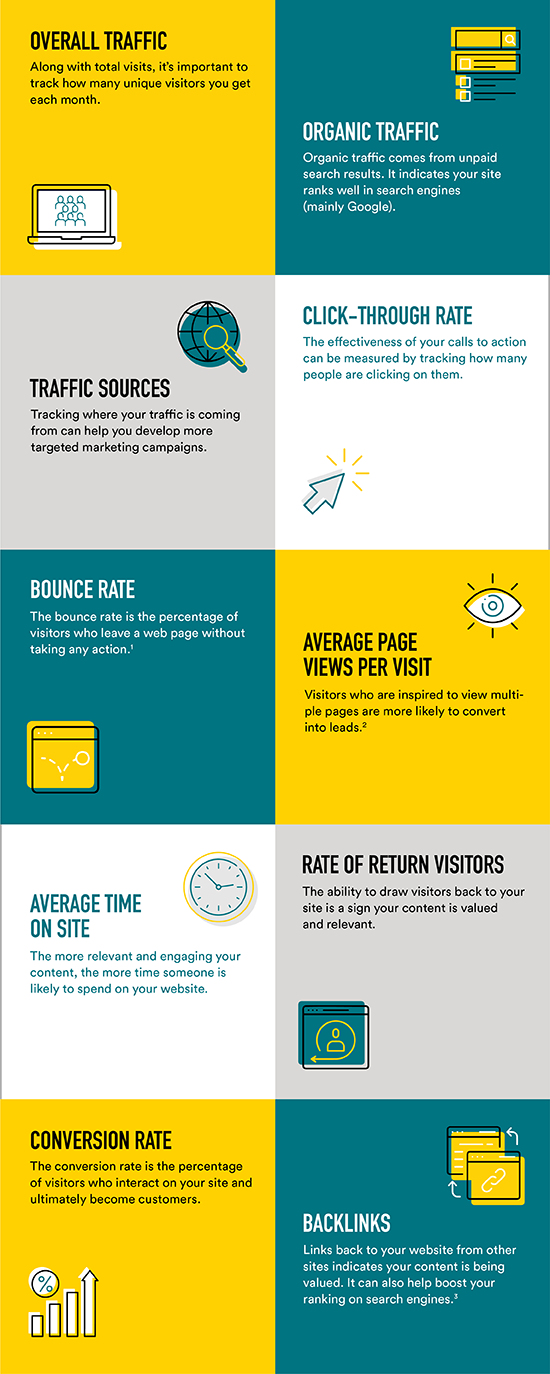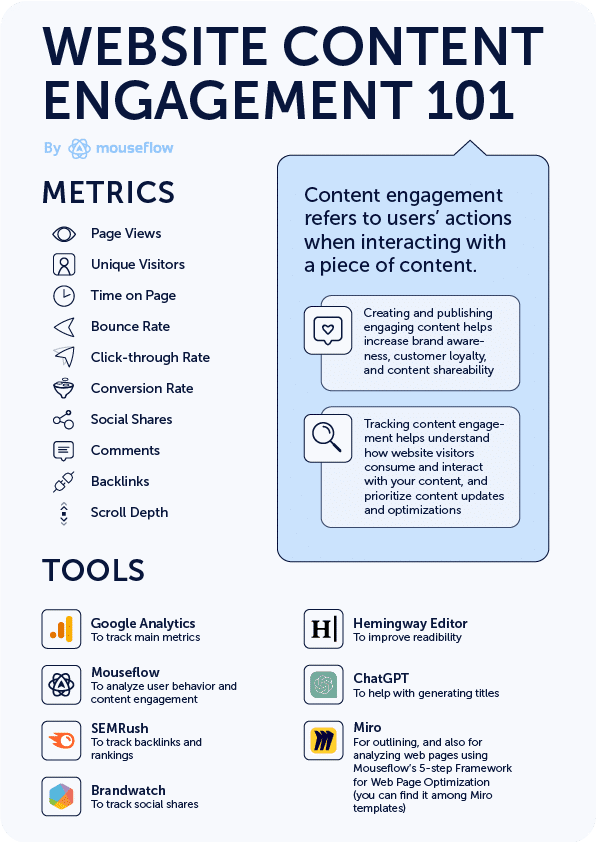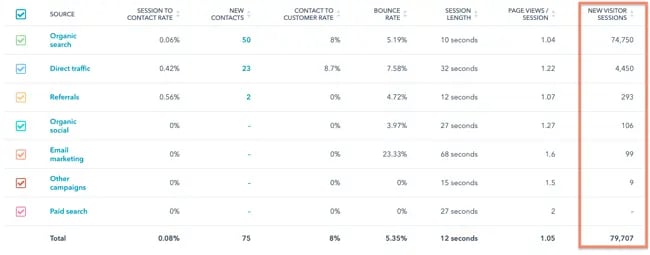Unlock the secrets of website success with these key metrics- don’t miss out on maximizing your online potential!

Image courtesy of via DALL-E 3
Table of Contents
Introduction to Website Metrics
When you have a website, it’s like having your own piece of the internet where you can share information, sell products, or connect with others. But how do you know if your website is doing well? This is where website metrics come in. Website metrics are like the measuring tools that help you understand how well your website is performing. By looking at these metrics, you can see what’s working well and where you might need to make some changes to make your website even better.
What Are Website Metrics?
Website metrics are like the report card for your website. They are numbers and data that tell you how many people are visiting your website, how long they stay on each page, and what they do while they’re there. For example, if you have a blog, your website metrics could tell you how many people are reading each post and how many are sharing it with their friends.
Why Are They Important?
Website metrics are important because they help you understand if your website is successful or if there are areas where you can improve. For example, if you have an online store, you can look at your metrics to see if people are buying your products or if they are leaving your site without making a purchase. By monitoring these metrics, you can make changes to your website to attract more visitors and keep them engaged.
Understanding Traffic Metrics
In the digital world, understanding traffic metrics is essential in measuring how many people are visiting your website. Traffic metrics give you insights into the popularity of your site and help you identify ways to attract more visitors. Let’s dive into what traffic metrics are all about!
What Are Traffic Metrics?
Traffic metrics are like a traffic counter for your website. They tell you how many people are visiting your site, how often they come back, and which pages they are spending their time on. Page views, which show how many times a page has been viewed, and unique visitors, who are individuals visiting your site, are key components of traffic metrics.
How to Measure Traffic Metrics?
Tracking and measuring traffic metrics can be done using tools like Google Analytics. This tool gives you detailed information about your website visitors, including their geographic location, the devices they use to access your site, and the pages they visit. By analyzing this data, you can make informed decisions to improve your website’s performance and attract more visitors.
Engagement Metrics
Engagement metrics are like measuring sticks that tell you if people really like what you have on your website. They help you see if visitors are interested in the things you’re sharing. Let’s take a closer look at what exactly engagement metrics are and why they matter.

Image courtesy of via Google Images
Types of Engagement Metrics
One important engagement metric is the ‘bounce rate’. This tells you how many people visit one page on your website and then leave without exploring more. The lower the bounce rate, the better!
Another key metric is ‘session duration’. This shows you how much time people spend on your website. The longer they stay, the more it means they find your content interesting.
Why Engagement Metrics Matter?
Monitoring engagement metrics is vital because it lets you know if your website is actually helpful and engaging to visitors. If they are leaving quickly or not spending much time, it may be a sign that something needs fixing on your site to keep them interested and coming back for more.
Conversion Metrics
In the world of websites, conversion metrics play a crucial role in determining how successful your site is at turning visitors into customers. But what exactly are conversion metrics? Let’s break it down in simple terms.
What Are Conversion Metrics?
Conversion metrics are like scorecards for your website, showing you how well it’s doing at getting visitors to take specific actions you want them to, such as making a purchase, signing up for a newsletter, or downloading a resource. The two key terms you’ll often hear in this realm are ‘conversion rate’ and ‘goal completions’.
Tracking Conversion Metrics
Now, how do you track these all-important conversion metrics? One popular tool for this is Google Analytics. It allows you to set up goals on your site, like completing a purchase or filling out a contact form, and then tracks how many visitors actually complete these goals. By analyzing this data, you can see what’s working on your site and where you might need to make improvements to boost your conversion rates.
SEO Metrics
SEO metrics are key indicators of how well a website is performing in search engines. They help website owners understand how visible their site is to potential visitors searching for relevant keywords. By monitoring SEO metrics, you can track the progress of your website’s search engine rankings and organic traffic.

Image courtesy of via Google Images
Important SEO Metrics
One crucial SEO metric is organic traffic, which refers to the number of visitors that come to your website through unpaid search results. This metric shows how well your website is ranking in search engines and how effective your SEO efforts are at attracting visitors.
Another essential SEO metric is search engine ranking, which indicates the position of your website in search engine results for specific keywords. The higher your website ranks, the more likely it is to attract organic traffic and potential customers.
Keyword performance is also a vital SEO metric that measures how well your chosen keywords are driving traffic to your website. Monitoring this metric can help you identify which keywords are performing well and which ones may need to be optimized or replaced.
Improving SEO Metrics
To improve your SEO metrics, it’s essential to focus on using relevant keywords throughout your website’s content. Conduct keyword research to identify popular search terms in your industry and incorporate them into your website’s titles, headings, and body text.
Additionally, ensure your website is mobile-friendly, as search engines prioritize mobile-friendly websites in their rankings. A responsive design that adapts to different screen sizes and devices can improve your website’s user experience and SEO performance.
Load Time Metrics
In the digital world, where everyone expects things instantly, the loading time of a website plays a crucial role. Let’s dig deeper into why load time metrics are essential and how they impact user experience and search engine optimization (SEO).
What Are Load Time Metrics?
Load time metrics refer to the time it takes for a web page to fully display its content after a user requests it. One important aspect of load time metrics is ‘page speed,’ which measures how quickly a page loads on both desktop and mobile devices.
Why Are They Important?
Fast loading times are vital for providing a seamless user experience. Imagine clicking on a website link and having to wait for what feels like an eternity for the page to load – frustrating, right? Users are more likely to abandon a website if it takes too long to load, leading to high bounce rates and lower engagement.
Additionally, search engines like Google consider page speed as a ranking factor. Websites with faster loading times tend to rank higher in search results, driving more organic traffic and increasing visibility.
Mobile Usability Metrics
Mobile usability metrics are important indicators of how well your website functions on mobile devices like smartphones and tablets. Two crucial metrics to consider are mobile load time and mobile responsiveness.

Image courtesy of via Google Images
Mobile load time refers to how quickly your website loads on a mobile device. A fast load time is essential for providing a seamless user experience and keeping visitors engaged. Slow load times can lead to frustration and cause users to abandon your site.
Mobile responsiveness measures how well your website adapts to different screen sizes and resolutions on mobile devices. A mobile-responsive design ensures that your site looks and functions properly across various devices, enhancing user experience and increasing the likelihood of visitor engagement.
Enhancing Mobile Usability
To improve mobile usability, it’s crucial to focus on creating a mobile-friendly website. Here are some simple tips to enhance mobile usability:
1. Use a responsive web design: Ensure that your website is designed to automatically adjust to different screen sizes for optimal viewing on mobile devices.
2. Optimize images and multimedia: Compress images and videos to reduce load times on mobile devices without compromising quality.
3. Streamline navigation: Simplify navigation menus and buttons for easy access on smaller screens, making it effortless for users to find what they need.
4. Test on various devices: Regularly test your website on different mobile devices to ensure consistent performance and compatibility across platforms.
By implementing these mobile usability enhancements, you can create a positive user experience for visitors accessing your website on mobile devices, leading to increased engagement and improved overall performance.
Social Media Metrics
Social media metrics are key indicators of how well your content is performing on platforms like Facebook, Twitter, and Instagram. They include metrics such as ‘shares’, ‘likes’, and ‘comments’.
Using Social Media Metrics
By keeping an eye on social media metrics, you can understand the level of engagement your audience has with your content. For example, if a post receives a high number of likes and shares, it indicates that your audience finds the content valuable and engaging. This can help you tailor your content to better resonate with your followers and drive more traffic to your website.
Summary
This article delves into the world of website metrics and why they are crucial for understanding the performance and success of a website. By monitoring various metrics, website owners can gain valuable insights into their site’s traffic, engagement levels, conversions, SEO performance, load times, mobile usability, and social media impact.

Image courtesy of via Google Images
Website metrics are like a report card for your online presence. They provide data on how many people visit your site, how long they stay, whether they take desired actions, how well your site ranks in search engines, how fast your pages load, how mobile-friendly your site is, and how your content performs on social media platforms.
By paying attention to these metrics and using tools like Google Analytics, website owners can make informed decisions to improve their site’s performance and user experience. Monitoring these key metrics regularly ensures that your website is on the right track and helps in identifying areas for enhancement.
Remember, understanding website metrics is not just about numbers; it’s about understanding your audience, optimizing your content, and enhancing the overall user experience. So, keep an eye on these metrics to ensure your website is thriving in the digital world!
Want to turn these SEO insights into real results? Seorocket is an all-in-one AI SEO solution that uses the power of AI to analyze your competition and craft high-ranking content.
Seorocket offers a suite of powerful tools, including a Keyword Researcher to find the most profitable keywords, an AI Writer to generate unique and Google-friendly content, and an Automatic Publisher to schedule and publish your content directly to your website. Plus, you’ll get real-time performance tracking so you can see exactly what’s working and make adjustments as needed.
Stop just reading about SEO – take action with Seorocket and skyrocket your search rankings today. Sign up for a free trial and see the difference Seorocket can make for your website!
Frequently Asked Questions (FAQs)
What Happens if I Don’t Monitor Website Metrics?
Not monitoring website metrics can be like driving a car without looking at the dashboard. You won’t know how fast you’re going, how much fuel you have left, or if there’s something wrong that needs fixing. Similarly, if you don’t keep an eye on your website metrics, you may not realize if your website is performing well or if there are areas that need improvement. This could lead to missed opportunities to grow your audience, increase sales, or enhance the overall user experience on your site.
Can I Improve My Website Metrics?
Absolutely! Monitoring website metrics allows you to see what’s working well and what needs attention. By tracking and analyzing these metrics, you can make informed decisions to improve your website’s performance. For example, if you notice that your bounce rate is high, you can work on creating more engaging content to keep visitors on your site longer. Or if your conversion rate is low, you can tweak your call-to-action buttons to make them more effective. With a focus on website metrics, you have the power to enhance your website and achieve better results.
Do I Need Special Tools to Check These Metrics?
While you don’t necessarily need special tools to check website metrics, using tools like Google Analytics can make the process much easier and more insightful. Google Analytics provides detailed reports on various website metrics, allowing you to track and understand data such as traffic sources, user behavior, and conversion rates. These tools can give you valuable insights into how your website is performing and help you make data-driven decisions to optimize your online presence.







